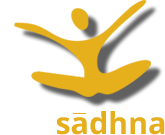Kathakali
This dance is particularly popular in Kerala state of South India. It has a beautiful combination of music, story and emoting. In this dance form, ’emoting’ has dominance. The dance features stories of Ramayana, Mahabharat or any other mythological story. The actor playing the role comes on the stage and enacts according to the story while in the back ground, musical compositions are played to explain the Bhavas.
Kathakali dance is characterised with the dominance of ‘Tandava’ element and Veerta (Bravery), Adbhut (spectacular) and Shant (peace) rasas are also established. The body movements are complex and the number of mudras also are many more than those found in other classical dance forms. In this style of dance, the Abhinay part is important.
The dance begins with a prayer to God sung from behind the screen. Thereafter, the instrumentalists play together and in the same beat ‘MarduP is also played alongwith which the male or female dancers come on the stage gradually and emote according to their roles through body movements. For example, if the role of Havana is to be played then all the expressions will be that of Roudra or Bhayanak Ras (Anger). As a result the actor does not recite the dialogues like in a drama but emotes through facial expressions and body movements.
Costume of Kathakali: In this dance costume designing and make up are of great importance. Characters wear tight jacket and colourful ghaghara (long skirt) which remains blown. They also wear a crown according to the role whose halo may stretch upto their feet.
The colour of the face is according to the role. The faces of gods are green, that of demons, red or black. Women and other minor actors have natural coloured face.
The decoration and make up is according to Abhinaya.

